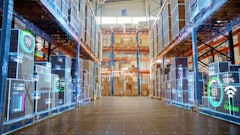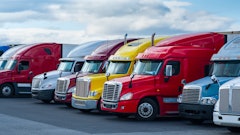
Widely used modern applications and websites such as Amazon and Uber pushed goods and services industry to an on-demand operation, where consumers expect whatever they need to arrive in little time. Due to the widespread nature of these features, on-demand mentalities have reached the business world. And, trucking is not exempt from this.
On-demand trucking allows shippers to find available truck drivers with space in needed locations in real time, reducing the red tape of establishing contracts and needing to schedule far in advanced. It cuts out the middleman.
On-demand technology
The state of on-demand trucking lies with the increase of technology and the impact of the Coronavirus disease (COVID-19) pandemic. In regard to technology specifically, on-demand trucking grows in efficiency and sophistication.
“On-demand trucking continues to grow,” says Jim Monkmeyer, president, transportation, DHL Supply Chain North America. “Thanks to developments in technology, there is an opportunity to match drivers, equipment and capacity in the market to loads much more efficiently. The efficiency is not just in terms of speed – with shippers able to access quotes much more quickly, while drivers are able to secure loads (for example, on backhauls) almost in real-time.
“There is also significant potential for better overall utilization of capacity in the market, which in turn brings benefits in terms of cost-savings and even reduced emissions. We see continued interest from customers in leveraging this potential.
“There is also increased sophistication on the part of digital freight marketplaces that are offering on-demand trucking solutions, both in terms of their core functionality such as real-time pricing and mapping, but also in how they integrate with shippers’ systems,” he adds. “This, in turn is allowing them to attract high-quality carriers and more independent operators onto their platforms. DHL Supply Chain, for example, has integrated Convoy as an option into our Transportation Management System, allowing our customers easy access to a guaranteed price and capacity option to compare to contracted carrier rates. This flexibility is helping the platforms to reach the critical mass they need to attract even more users and increasing ‘social acceptance’ of on-demand trucking in the industry.”
Click here to hear more about technology in trucking:
Trucking during a pandemic
COVID-19’s impact increases the usage of on-demand trucking, as companies need more flexible options.
“The pandemic has forced transportation professionals to find a more efficient way to source capacity as so many people have been pulled into remote environments and are managing teams across multiple locations,” says Peter Coumounduros, general manager at Kuebix Load Match Group. “Leveraging technology to connect with different stakeholders across the network has become a necessity for many shippers.”
The compounded growth of on-demand trucking seen throughout the pandemic likely will return to a steadier growth after COVID-19 subsides.
“Covid-19 had the overall impact of reducing capacity on the market, principally due to many drivers leaving and not returning, while some smaller carriers also exited the market,” Monkmeyer says. “This, coupled with the sudden decline in certain areas of manufacturing and the rapid increase in e-commerce radically changed the make-up of the market and trade flows, while spot rates spiked overall. In some ways, this could potentially have increased the attractiveness of on-demand trucking for both shippers (who needed to access more competitive spot rates in a competitive bidding environment) and drivers (attracted to higher rates in the spot market and looking for new sources for loads on some routes). On the other hand, it was a market environment that favored larger shippers and their logistics providers while brokers and freight marketplaces who thrived on contracted lanes using multiple carriers canceled shipper agreements due to losses incurred as rates went up, reminding many of us why we used to avoid brokerage whenever possible.
“At the same time, we do not see this as a long-term trend – as the market situation stabilizes and volumes return, we expect on-demand trucking to return to its prior growth trajectory,” he adds. “The main challenge it will face – as will the broader trucking industry – will be that of a declining workforce. The driver shortage has been exacerbated by the pandemic and a lot will depend on how many new drivers the industry is able to recruit (assuming that autonomous driving does not advance in the near to mid-term). Ongoing capacity constraints could continue to favor those with access to dedicated fleets and larger carriers. All of these factors will continue to drive on-demand margins down.”
 Vit
Vit
The future state of on-demand trucking
Technology continues to advance, and the gap between shippers and truckers will come closer together as the one-demand trucking marketplace becomes more connected, Monkmeyer also explains. As on-demand culture grows, the trend is anticipated to reach major brokers who have more volume.
“While we believe that there will be space for several players in the market, it remains to be seen who will remain standing,” Monkmeyer says. “What is a certainty is that volatility and capacity challenges will mean that digital brokers that have critical mass and provide the best carrier experience and performance will continue to grow at the expense of those that don’t. As a Lead Logistics Provider, DHL is watching the space closely and developing capabilities to further capitalize on these developments on behalf of our shippers.”
The future state of on-demand trucking relies on how and when the pandemic will subside, technology’s growth (especially autonomous driving tech) and the driver shortage.




























